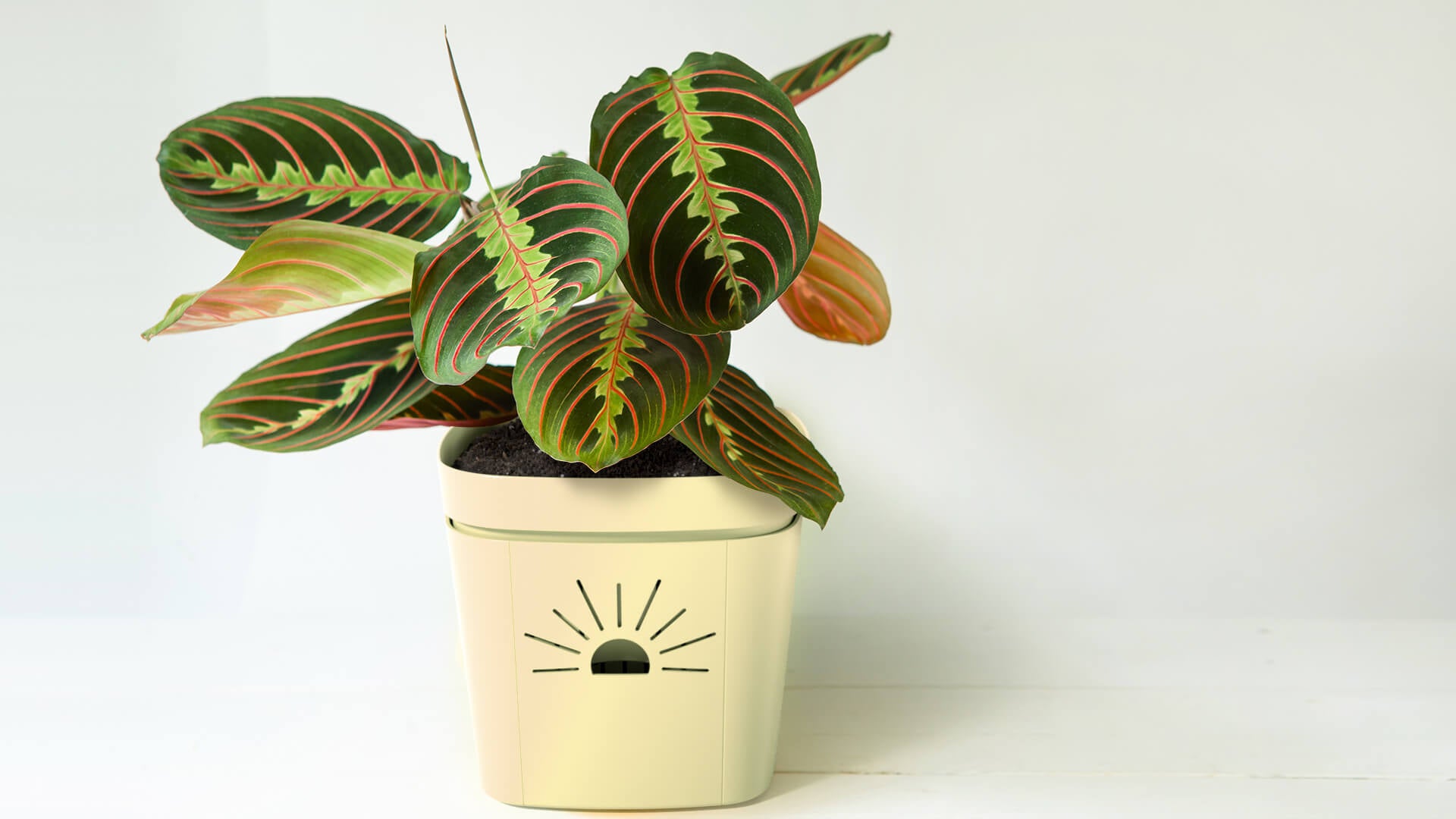Learn how to care for Monstera.
A monstera plant is a genus of tropical evergreen plants native to Central America, Mexico, and the West Indies. It belongs to the Araceae family of plants and is also known as the Swiss cheese plant or split-leaf philodendron. Monsteras are characterized by their large, glossy green leaves with patterned holes and deep fissures in them. They can grow up to 15 feet tall when given enough support but can be kept much smaller if pruned regularly.
Monstera plants have become popular as houseplants for many reasons. First, they are relatively easy to care for compared to other tropical plants – they don’t need much light or water and do well in normal room temperatures. Secondly, monsteras look great because of their distinctive foliage, which adds an interesting visual element to any space in your home or office. Thirdly, since Monsteras naturally climb upwards on tree trunks or poles outdoors, you can use a trellis indoors for it to climb up – adding even more visual interest! Finally, these plants make great conversation starters – just ask anyone who has one about it!
Origins
Monstera plants are native to warm, humid regions of the Americas. There are 49 species in the family. To see them all, click here.
This genus is named after the word for monstrous in Latin! The word can also be taken to mean abnormal, referring to Monstera’s large leaves with unusual holes and splits. Believe it or not, Monsteras are actually herbs or vines that can grow up to 65 feet tall in the wild. They grow by attaching their aerial roots to the trunk of a tree and climbing vertically up the surface. They also have long roots that grow down into the soil, making them hemiepiphytic plants.
The leaves are very large and can easily reach 36 inches wide, even indoors. The reason that the leaves have holes is to allow them to spread across a greater area for photosynthesis and to allow sunlight to reach the leaves underneath. Did you know that the popular houseplant Monstera deliciosa grows a fruit that is as sweet as a pineapple? It is often called the fruit salad plant!
This plant has many common names, including Mexican breadfruit, Penglai banana, window leaf, split-leaf philodendron, monster fruit, and hurricane plant, to name a few.
Light
Requirements
Your Monstera plant loves bright, indirect light, and it needs to be protected from direct sunlight. Too much of the sun’s full touch will cause its leaves to burn and scorch, so it’s best to find a spot with partial shade where your Monstera plant can receive plenty of ambient lighting but not too much direct exposure. It’s important to remember that this tropical houseplant hails from the shady forest floor in Central America and South America and is used to lower levels of sunlight than what you might encounter during summer months. When providing light for your Monstera, make sure that you don’t give it too much sun, as this can cause irreparable damage to the leaves.
Genus Summary
| GENUS | Monstera |
| COMMON NAMES | Split-leaf philodendron, Swiss cheese plant. |
| LIGHT | Bright, indirect light |
| DRY CYCLE | Naked Root - 14 days |
| WATER REQUIREMENTS | Conventional planter, wait until top two inches of soil is dry before watering. |
| HUMIDITY | High |
| TEMPERATURE | Ideal 68-78°F. Never below 50°F. |
| FEEDING | 1x month |
| TOXICITY | Toxic to animals and humans |
| PESTS | Spider mites, and mealybugs |
| DISEASES | Root rot if overwatered |
| POT | A pot that allows for air to flow around the roots, as it would in nature. As they grow large, you may need to weigh the pot down. |
| SOIL | Nutrient-rich, but well-draining. Average potting soil with extra moss works well. |
| FERTILIZER | Balanced fertilizer, diluted, during spring/summer only |
| PROPAGATION | Stem cuttings are easiest. Can also try division, air layering, or seed (hardest). |
| PRUNING | Only to limit growth if it gets too large. |
| SIZE | 3 feet to 15 feet tall indoors and up to 8 feet wide. |
Water Requirements
If you are using a Naked Root planter, you can follow a 14-day watering schedule for your Monstera.
Your Monstera may be prone to rot if you give it too much water, and it may wilt if you don’t provide enough. To make sure you give your plant the right amount of humidity, wait until at least 2 inches of the soil is dry before watering. Pour water into the pot until it is completely full, then let the excess liquid drain out. Make sure to pour out any standing liquid in the tray when finished. During winter, reduce your watering frequency and only water when 3-4 inches of soil is dry without letting the plant wilt.
Humidity
For Monstera plants, it is best to maintain high humidity, although they can tolerate drier conditions from time to time. You can keep a plant humidifier near your Monstera or mist it occasionally. To do this, mist the plant twice a week with filtered or distilled water, but be sure to do it in the morning so the water can dry. In addition, monthly cleaning of the leaves is recommended to reduce dust buildup and prevent pest infestations. To clean the leaves, mix two drops of dish soap into a bowl of water and use a damp cloth to wipe them down.
Temperature
For this tropical plant from warm climates, the ideal temperature range is 68-86 degrees Fahrenheit. If the temperature drops below 50 degrees, growth will cease. Frosty conditions will kill your plant, so make sure to avoid cold weather completely.
If you are in USDA zones 10-11, your plant can be kept outside as these zones offer the right temperature range, and if provided with enough support, it can grow up to 15 feet tall. For those living in other zones, it is best to keep this plant indoors and provide it with an appropriate temperature and sufficient humidity.
Toxicity
The Monstera plant is toxic to humans and animals if ingested. The oxalate crystals in the plant are insoluble and can cause irritation, burning, vomiting, and drooling when consumed. It can become life-threatening if very large quantities of the plant are eaten but do not typically pose a serious risk unless it is eaten in large amounts. In order to avoid any health issues related to the ingestion of this plant, ensure that it is kept away from pets or children who may be tempted to eat it. Additionally, always wash your hands after touching the leaves or stems, as contact with these parts can also cause irritations.
Pests and Diseases
This plant generally does not attract many pests, but two of the most frequent ones are spider mites and scale insects (specifically mealybugs). Spider mites cause small spots or patches on leaf surfaces and may turn the leaves yellow if not treated. Neem oil is an effective way to combat mites, as the naturally occurring azadirachtin will kill their eggs and poison adults. For scale insects, insecticidal soaps can be used to eliminate them, and neem oil is a good preventative measure.
When taken care of properly, Monstera plants can be very resistant to most diseases. It is essential to avoid over-watering in order to prevent root rot, which can be treated by trimming off any damaged roots during repotting. Additionally, making sure your soil drains well and avoiding standing water in your pots will help keep your Monstera healthy and disease-free.
Pot
Monstera plants get very top-heavy as they age. As the plant gets bigger, choose heavier and heavier pots so it doesn’t topple over. Alternatively, grow them in lightweight plastic pots and weigh them down with rocks. Leave room in your pot for a moss pole or stake, as Monsteras are always looking for something to climb.
Soil
Monstera prefers soil that is nutrient-rich and well-draining. You can use a standard potting mix with extra sphagnum moss for these plants, or you can create your own blend by mixing together peaty soil and perlite in equal parts. Adding a little additional perlite to the potting mix will help ensure it drains properly without becoming soggy. Make sure to keep an eye on the moisture levels of your Monstera’s soil, as too much water can cause root rot or other issues.
Fertilizer
For Monstera plants, there are two options when it comes to fertilizing. The most popular method is to use a diluted liquid 20-20-20 fertilizer, at a half teaspoon per gallon of water, and pour it onto the soil during a regular watering session. Afterward, be sure to get rid of any leftover liquid in the tray.
Another option is to use a slow-release granular fertilizer that is balanced with nitrogen, phosphorus, potassium, and magnesium. For the first year, apply 1/4 pound every eight weeks and don’t fertilize during the winter. In subsequent years, gradually increase the fertilizer to 1 pound and reduce the frequency of fertilizing to 2-3 times during the growing season.
Propagation
Propagation of Monstera deliciosa can be done through several different methods.
Seed – It is difficult to propagate from seed since they are hard to find. To ensure the seed’s short shelf life is used, it should be planted quickly with a thin covering of soil and kept moist until it germinates in a few weeks. Growing from seed will take a while before the plant is mature.
Stem cuttings – Cuttings taken from fresh and healthy stems with aerial roots attached are ideal and can be put into water or prepared potting soil. No rooting hormones are required as the plant will develop new roots quickly.
Division – Division is only possible on older plants and should be done by cutting suckers into foot-long segments and pushing them into the soil, where they will grow new roots.
Air Layering – You can propagate Monstera plants through air layering. First, saturate some sphagnum moss and squeeze out any additional water. Secure it around the area where an aerial root and leaf axil is located, and then secure it with string. Then, cover it with either plastic wrap or a plastic bag. Make sure you provide air vents or poke some holes in the bag so that air can get in. After a few months, new roots should form, and you can clip them off below the roots and replant them elsewhere.
Pruning
Monstera deliciosa is a climbing plant that can grow over 60 feet tall in its natural environment. Even inside the typical house, they have been known to reach 10-15 feet tall. Its aerial rootlets have a tentacle-like grip and search for something to grip. If you’re growing this plant indoors, it’s best to provide some sort of support like a wooden stake or trellis, as wood is easiest for the plant to grab onto. Make sure the support is securely attached in place, as the large leaves can be quite heavy.
Pruning is generally done for aesthetic purposes or to limit the plant’s growth. Lower leaves that have died off can be cut off at the stem joint, just above 1/4 inch. Aerial roots which have become too wild can be snipped away with a sterile pair of pruning shears or tucked into the pot if they are close to the soil. Unwanted overgrowth can also be removed as needed, but be cautious not to take off too much foliage and avoid cutting the main stalk.
10 Striking Varieties and Cultivars
People everywhere have been captivated by the Monstera plant and its distinctive large, slotted leaves. But there are actually many kinds of Monstera plants that differ in size, color, and pattern of holes in the leaves. It’s amazing! Here are a few of the most beautiful varieties.
Monstera Deliciosa – This Monstera is very popular and recognizable due to its large, attractive holey leaves. It is a common sight when shopping for plants and is often featured in home decor. This variety of Monstera is an excellent option for anyone looking for a new houseplant, as it is very easy to care for.
Monstera Borsigniana – It can be hard to differentiate between Monstera deliciosa and Monstera borsigniana when they are young. One way to tell them apart is to look at the stem – deliciosas have bumps or puckers where the leaf attaches, but borsigniana does not. Borsigniana also grows faster but ends up smaller than deliciosa. When borsigniana is mature, it will have two rows of leaf holes rather than the scattered pattern of deliciosa. If you end up with a borsigniana instead of a deliciosa, you don’t need to worry – it can still make a beautiful addition to your home and can grow just as tall and nearly as wide, and it will do so quickly!
Monstera Variegata – This type is a bit harder to find, and you may have to scour online sellers to get one. It has large white variegation against the green. The white spots are so large and smooth that it looks like the leaves have been dipped in white paint.
Monstera adansonii – Monstera adansonii is a smaller relative of the deliciosa, but it still has large holes that take up about half of the leaf. It is easy to locate but may be incorrectly labeled as monstera obliqua, which is very rare. Adansonii has thicker and rougher leaves than the obliqua. This variety looks especially lovely when grown in a large hanging basket and allowed to cascade over the side.
Monstera Pinnatipartita – This variety is known for its large glossy leaves that tend to grow slits instead of holes. These evergreen perennials have a gorgeous emerald green color and stiff, sturdy stems. Though they can be hard to find in stores, they’re easy to source online through various nurseries or gardening sites. This Monstera likes a bit more sun than others and requires higher humidity levels. The leaves start small and grow enormous with age and have a rougher texture than some other Mosteras.
Monstera dubia – Monstera Dubia is a unique and quite rare variety. This varietal is characterized by its very small, heart-shaped leaves, which feature both dark and light green coloration that gives it the look of being variegated, although this isn’t actually the case. It has shorter stems than other varieties, and its leaves grow much closer to whatever surface it’s climbing on or near. These particular plants are difficult to come across, but if you do manage to find one, then you should definitely buy it! They are sometimes labeled as “Shingle Plant”.
Monstera Siltepecana – Monstera Siltepecana (silver Monstera) is an absolutely stunning variety of the Monstera genus. Its leaves are large, teardrop-shaped, and have a unique pattern of small holes around the central vein. The colors vary more than other varieties, with both dark and light green hues present in each leaf. Although they are harder to find than some other cultivars, they’re well worth it if you can get your hands on one! These plants grow quickly and will happily climb up a moss pole or trellis in no time at all.
Monstera Oblique -Monstera Obliqua is an uncommon type of Monstera that cannot be purchased at a regular garden center. You will have to order from a specialty nursery to obtain one. Although the leaves are thin and fragile, they have the iconic holes that this species is known for. In fact, the leaf is mostly a hole, with over 90 percent of the leaf surface taken up by the holes.
Monstera deliciosa ‘Albo Variegata’ – This cultivar has perfectly heart-shaped leaves that grow over a foot long. The leaves are striated in a balance of green and pure white. As the leaves grow and age, they split, with the hole going all the way to the edge of the leaf. It is an impressive sight!
Monstera deliciosa ‘Thai constellation’ – This cultivar is stunningly beautiful and was created by botanists in Thailand. It was named after the white spots and striations on the leaves that look like stars in the sky. The large green leaves are covered in tiny white dots and large patterns of cream-colored variegation. This cultivar tends to grow in a tighter clump instead of widely spread, like some other Monsteras. It is a good choice for a smaller room. The leaves are stacked nearly one on top of another, giving it a bushier appearance.
Summary of Monstera Plant Care
Monstera plants are very rewarding and easy to grow. Provide them with bright, indirect light, high humidity, and a balanced fertilizer during the growing season, and they will thrive. Give your Monstera a pole to climb and a heavy pot so it doesn’t topple over, and it can grow six feet or taller. Monsteras are bothered by very few pests or diseases, making them worry-free houseplants.

 Verified Buyer
Verified Buyer









